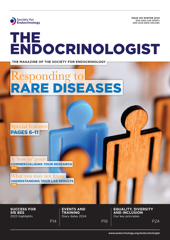Veemal Bhowruth made the transition from research to commercialisation, and now works at University of Birmingham Enterprise Ltd, the technology transfer company for the University of Birmingham, where he is the life science lead. Here, he answers some questions that are frequently posed by readers about technology transfer.
‘The TTO will give the best assistance if you engage with them early.’
WHAT IS TECHNOLOGY TRANSFER?
Research commercialisation comes under the bracket of knowledge exchange, which, as the words suggest, brings together academic staff, users of research, and wider groups and communities.
Technology transfer is a subset of knowledge exchange and involves the transfer of innovative solutions that are protected by different intellectual property rights.
Universities and research institutions usually have a dedicated Technology Transfer Office (TTO), which is staffed by experts from a variety of disciplines. The focus of the TTO is not primarily on making money, but rather on finding and accessing the right avenues for translation or knowledge exchange.
WHAT ARE INTELLECTUAL PROPERTY (IP) RIGHTS?
In most medical fields, you can’t commercialise if you don’t have IP rights. For this reason, initial conversations with TTOs are usually about patents or IP.
IP rights are protected by law, and give the owner the right to benefit by providing them with control over how their property is used. This protection is territory-specific, and lasts for a set period of time, enabling the inventor or the owner of the patent to stop others from using, making or selling the invention without permission. Most medical innovations take several years to come to market, and this period of protection provides you with a monopoly to commercialise the technology and be the first to market, and to recoup R&D costs.1
IP rights include patents, copyright, trademarks and industrial designs (www.wipo.int/about-ip). For medical commercialisation, the relevant IP is usually a patent – and for an invention to qualify for patent protection, it must be novel, have an inventive step and be industrially applicable.2 This last point is important – theories are not patentable in isolation but, if put into a practical context, the result could be patentable if it is also new and inventive.
WHAT DOES PATENTING INVOLVE?
Patenting is an expensive, lengthy, multistep process, and organisational budgets are limited, so you can expect your discovery or invention to be heavily scrutinised before filing.
There are two things that researchers need to be aware of at the outset.
First, disclosure to anyone, in any format, will jeopardise patentability, if this happens before the patent application is filed. This includes journal publication, posters or presentation at conferences, or even emails that inadvertently contain details of the invention. This creates an inevitable tension between research, which has the imperative of publishing or presenting results quickly, and filing a patent, which has the imperative of non-disclosure before filing a patent application, although most journals will defer publication if they are told a patent application is being filed.
Secondly, you need to prove that the inventive step was yours, and to be clear on what your research contract allows in terms of patenting, particularly if you are contracted to work with an external organisation. TTOs will ask to see both your lab notebooks and your research contracts, usually before they start on a patent search, to see whether the invention has already been patented. The TTO will give the best assistance if you engage with them early.
UNDERSTANDING THE PATENTING PROCESS
The European patenting process is governed by the European Patent Office (EPO). It has immutable conditions and deadlines. It can take four years or more from filing the initial application to the patent being published in its final form.
Broadly speaking, the process is as follows:3
- The initial patent application is filed at your national patent office. This defines the ‘priority date’ – the date from which you believe your invention is new. Patent applications filed in other European countries in the 12 months after this date are treated as if they were filed on the priority date.
- The priority date defines the start of a 12-month period. Patent examiners search patent databases, technical and academic literature for similar inventions, and assess how these might impact upon your patent application. This search report is made available to the inventors who, as a result, may decide not to proceed beyond this stage.
- 18 months after the priority date, the application is published on patent databases. The patent is now ‘pending’ and its technical details are on public display.
- At this stage, the EPO can crowd-source evidence against the patent application, which may limit the scope of your application, or even block it.
- This evidence, together with the earlier search report, is presented as ‘examiner’s objections’.
- The patent application may need to be revised in response to these before it is granted.
‘Spinout will be more time-consuming [than licensing] and is likely to require much greater input from you.’
LICENCE OR SPINOUT?
If the discovery is patentable, there are two routes to market: licensing the IP to an external organisation to develop a product or service, or spinout, which involves setting up a company. They each have their own merits, and TTOs are well versed in the cases for both routes.
Good IP is ‘necessary but not sufficient’ for spinout success. Other factors – such as finding the right management team, having the right business model, and securing sufficient capital to keep the company running before it brings in revenue – are necessary considerations.
What you want is equally important. Spinout will be more time-consuming and is likely to require much greater input from you, even if you want to stay in your current research or clinical role.
WHAT ELSE DOES A TTO DO?
It could be that your invention has applications in markets that you don’t know about. TTOs will work with you to gain market knowledge and understanding, and they may support you or your research team through accelerator programmes such as ICURe (www.icureprogramme.com), which guides researchers through the process of refining and validating commercial potential.
TTOs can also help you find and apply for translational funds and, in some universities, they also run entrepreneurship training, which is worth considering.
Finally, patenting is not the only method of knowledge exchange. This covers a broad range of activities, including consultancy, collaborative research and Knowledge Transfer Partnerships (www.ktp-uk.org), which connect businesses that have an innovation idea with the academic expertise to help deliver it.
TTOs are exceptionally well-connected, and have access to these networks, which can help you commercialise in other ways.
VEEMAL BHOWRUTH
University of Birmingham Enterprise Ltd
For further reading see the factsheet ‘Knowledge exchange and commercialisation’.
REFERENCES
- World Intellectual Property Organization 2020 What is Intellectual Property? www.wipo.int/edocs/pubdocs/en/wipo_pub_450_2020.pdf.
- European Patent Office 2023 Is it Patentable? www.epo.org/en/new-to-patents/is-it-patentable.
- European Patent Office 2023 What to Expect www.epo.org/en/new-to-patents/what-to-expect.
In this issue: The benefits of engaging with industry






